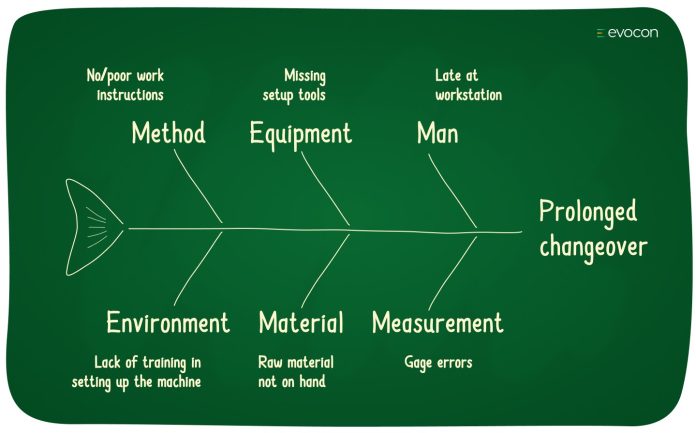No matter what we do, there are always things that go wrong. While you cannot control everything, you can learn to anticipate risks and avoid harmful mistakes by applying the iceberg model and Ishikawa diagram to root cause analysis. If you want to fix a problem, you need to figure out what caused it in the first place. Sometimes, this can be easy—your coffee machine is broken because a screw fell out. Sometimes, it’s more complicated than that—your coffee machine is broken because someone used the wrong voltage setting. This article looks at how root cause analysis works and how you can use Ishikawa and the Three Whys model to find the problems in your projects. Root-cause analysis is a systematic approach to problem solving that seeks to get to the root of a problem. By combining the Ishikawa diagram with an iceberg model, the two-stage approach is played upon in a very intuitive way that is easy for anyone to understand. Root Cause Analysis (RCA) is a powerful tool for problem solving that can be applied in software development as well as in everyday problem solving. RCA is also known as Buck’s Failing and Fishbone Diagrams.
What is an Ishkawa diagram?
In combating complex problems, most of the project managers use Ishkawa diagrams. The Ishkawa diagram, named after the Japanese innovator Kaoru Ishkawa, is a great tool to solve complex problems in the project management field using root cause analysis.
Ishkawa diagram and root cause analysis
Finding the root cause of a problem is called root cause analysis, and in the context of an Ishkawa diagram, first we have to draw the diagram, which involves a few steps.
Define the problem.
The Ishkawa diagram starts with defining the problem, and after that, draw a line either on the left or right side to mention factors that are influencing that root cause.
Identify the factors.
The second step in this root cause analysis method is to identify the basic factors that are contributing to that cause. You can categorize these factors according to your will. Categorizing the factors is very important when managing more complex problems. Plot them along the main line.
Find the root cause.
To find the possible cause of each factor, ask yourself, “Why is this happening?” Or you can solve this with the help of the “five whys” method. Consider all the possible causes of the problem and write down all of them.
Making the analysis
Now it’s time to look at the diagram closely and find the possible root causes of that specific problem. Think about the most important one that is contributing most to your issue, and gather more evidence and data related to that problem. Here you would be able to mark the possible causes of the problem under consideration.
Root cause analysis and the Iceberg model
Basic level causes can be found out through the Ishkawa diagram in root cause analysis, but every time there are more deep causes contributing towards the project failure. These causes can be cleaned only using the Iceberg model. The iceberg model allows you to see more in depth of the problem. Root-cause analysis wouldn’t go as straight as always; there might be deep root causes that are not evident but contribute largely to the problem. For such a root cause analysis, we have to use the Iceberg model.
How do I use the Iceberg model for the root cause analysis?
The iceberg model is a simple model for identifying the root causes of a problem. It helps in determining the underlying reasons for a problem and its consequences.
In the iceberg model, there are two types of causes:
Primary cause: This is the main reason behind the failure. It is responsible for the failure.
Secondary cause: This is an effect of the primary cause. It may have been triggered by a primary cause, but it still has its own reason behind it.
The iceberg model is a method of root-cause analysis. The method suggests that the problem is caused by just one or two causes, and therefore, only those causes should be examined in depth. The model works on the principle that if you want to understand the person who caused your problem, you need to look at their actions. In other words, if a manager was responsible for the problem, then he or she probably didn’t do anything wrong. If a technician was responsible for your problem, then he or she probably did something wrong.
The reason why this works is because people tend to think of themselves as being part of the problem and not part of the solution. When we think about ourselves as being part of the problem, we tend to work harder on fixing it than when we think of ourselves as being part of the solution (which is what we are when we’re not thinking about ourselves).
Conclusion
The root-cause analysis process helps you eliminate the most serious causes first. That is, it helps you answer the question: which causes have the largest effects and cascade through the system? The actual cause may be something you haven’t considered before. By learning the true root cause, you can design a solution that eliminates the problem at its source.



















